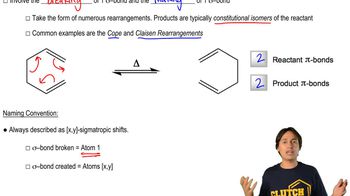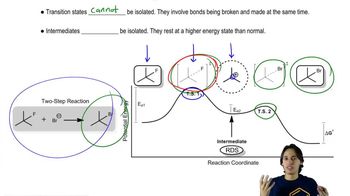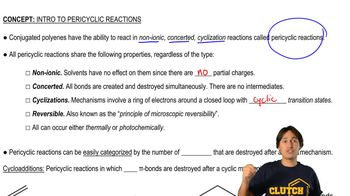Multiple Choice
Predict the major, organic product for the following reaction.

 Verified step by step guidance
Verified step by step guidance Verified video answer for a similar problem:
Verified video answer for a similar problem:



 6:28m
6:28mMaster Definition of Cope Rearrangement with a bite sized video explanation from Johnny
Start learning